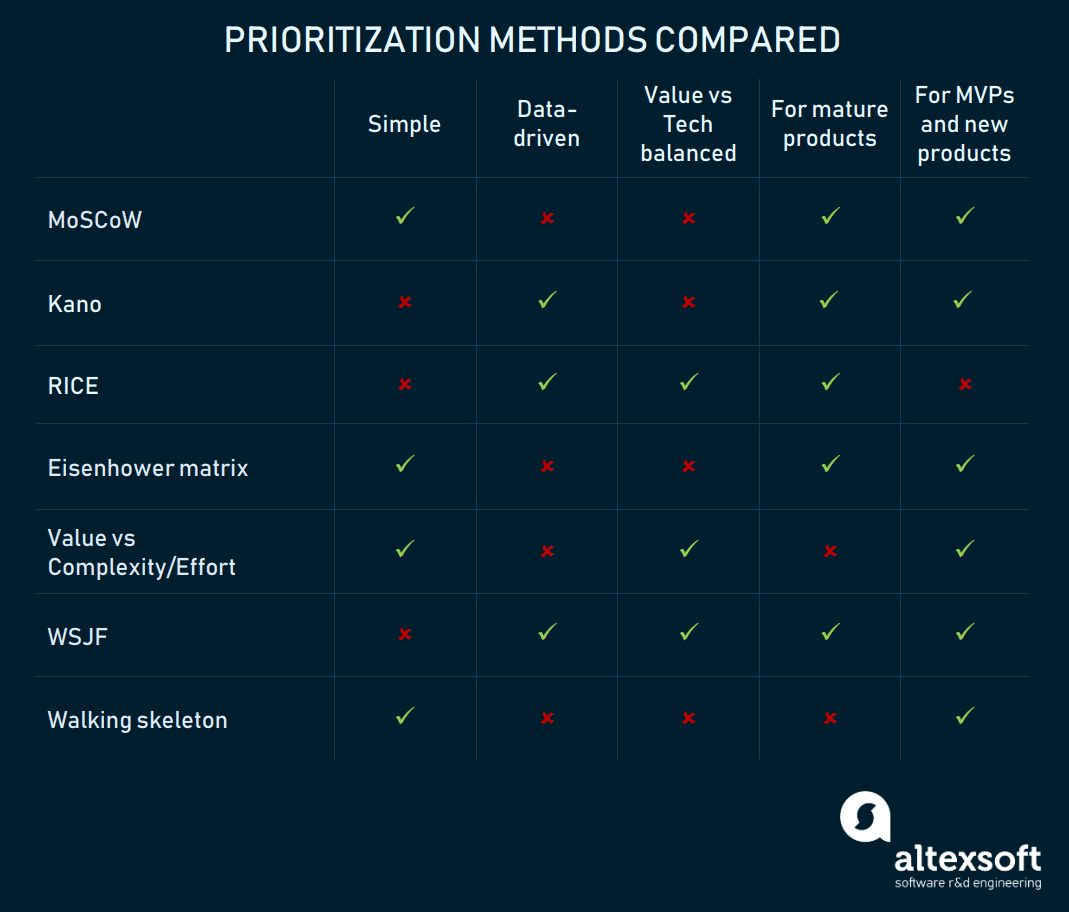Prioritization
The Most Popular Prioritization Techniques and Methods: MoSCoW, RICE, KANO model, Walking Skeleton, and others

Prioritizing tasks in a project backlog is one of a product manager’s responsibilities.
Recommended criteria to keep in mind whilie considering prioritization methods: (SD BU - Simplicity, Data-Driven and Data Availability, Balance between tech constraints and business value, Use case)
- Simplicity:
- The simpler the method, the faster you prioritize.
- Data-driven prioritization
- Some methods rely more on assumptions than on proved data, some not.
- While it looks like data-driven is the way to go, there are many cases when you don’t have data or don’t have time for complex data-backed prioritization.
- The balance between technology constraints and business value
- It’s cool to create things that customers love and are ready to pay for.
- So, there are methods that put the value on top, but they may lack technical consideration.
- The feature sometimes looks extremely important in business terms, but equally difficult in terms of development.
- If the method suggests you grab the low-hanging fruit – i.e. choose tasks that will bring value fast – it may be a go-to approach.
- Best use case
- Prioritizing for an MVP and for a mature product may be drastically different.
These methods are not mutual and can complement each other.
Mind map coming here!